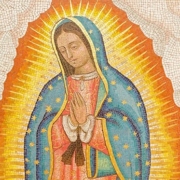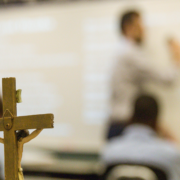The Call to Teach
Church Guidance for Catholic Teachers
Denise L. Donohue, Ed.D., and Daniel P. Guernsey, Ed.D.
About The Call to Teach
The original version of The Call to Teach was written in 2015 by Dr. Jamie F. Arthur. This significantly revised version was written by Dr. Daniel Guernsey, senior fellow and education policy editor at The Cardinal Newman Society, and Dr. Denise Donohue, vice president for educator resources and evaluation at The Cardinal Newman Society. This edition adds quotes from the most recent documents from the Vatican’s Congregation for Catholic Education and sets of reflective questions. A facilitator guide and PowerPoint slides are available at cardinalnewmansociety.org.
Summary: The Church has always encouraged her teachers to view their teaching position as a vocation of service, and its essential role is lived as a witness to the faith in both word and deed. This booklet presents selections from Church documents to offer guidance and encouragement to educators, in a readily accessible format. The selections are organized around five themes: The Teacher and Mission of Catholic Education, The Teacher and Vocation, The Teacher and Faith Formation, The Teacher and Lived Witness, and The Teacher and Catholic Culture.
Introduction
In recent years, efforts to strengthen the Catholic identity of schools have focused Church guidance on the important fact that all teachers—lay, clerical, or religious—have an essential function in Catholic education as role models of the faith, in both word and deed. A review of these Church teachings provides an understanding of the importance of the Catholic teacher and the teacher’s role in fulfilling the mission of the Church—preparing students to fulfill God’s calling in this world and attaining the eternal kingdom for which they were created.
The Church has issued many important documents on Catholic education in the last 60 years. The Second Vatican Council’s Declaration on Christian Education, Gravissimum Educationis (1965), outlines the basic principles of Catholic education, acknowledging the Church’s reliance on Catholic educators and the importance of preparation in “secular and religious knowledge.”[1] Twelve years later, the penetrating impact of social-cultural pluralism in Catholic education was addressed by the Vatican’s Sacred Congregation for Catholic Education in The Catholic School (1977). The Church expressed concern that teachers embrace the Catholic school’s unique identity and display “the courage to follow all the consequences of [this] uniqueness.”[2] This concern was repeated in the Congregation’s 2022 document, The Identity of the Catholic School for a Culture of Dialogue.[3]
In 1982, due to growing reliance on the laity to lead and staff Catholic schools, the Sacred Congregation focused particular attention on teachers in its document Lay Catholics in Schools: Witnesses to Faith. The document details the “specific character of their vocation” and presents “a true picture of the laity as an active element, accomplishing an important task for the entire Church through their labour.”[4] The Congregation expanded on the distinctive characteristics of Catholic education in 1988 in The Religious Dimension of Education in a Catholic School, restating, “Prime responsibility for creating this unique Christian school climate rests with the teachers.”[5] Fewer than ten years later, to address the “crisis of values” in contemporary society, the Congregation issued The Catholic School on the Threshold of the Third Millennium (1997). The document includes the fundamental characteristics of schools necessary to be effective agents for the Church and the need to recruit “competent, convinced, and coherent educators” who serve as a reflection of the one Teacher, Jesus Christ.[6]
As America entered the twenty-first century, the bishops’ concerns over Catholic school closures and waning Catholic identity in the United States spurred the Conference of Catholic Bishops to issue Renewing Our Commitment to Catholic Elementary and Secondary Schools in the Third Millennium. Noting that ninety-five percent of those working in Catholic schools were laity, the bishops stated, “The formation of personnel will allow the Gospel message and the living presence of Jesus to permeate the entire life of the school community and thus be faithful to the evangelizing mission.”[7] The criteria they presented for personnel in a Catholic school include being grounded in a faith-based culture, being bonded to Christ and the Church, and being witnesses to the faith in both words and actions.
Catholic schools continue to struggle against secularization and moral relativism in every aspect of society. Laying out plans to celebrate the 50th anniversary of the Declaration on Christian Education, Gravissimum Educationis, the Congregation for Catholic Education issued Educating Today and Tomorrow: A Renewing Passion, which describes the impact of contemporary culture as an “educational emergency.” Along with the many issues facing Catholic education—identity, limited means and resources, protection of religious freedom, and pastoral concerns—the document discusses the challenges associated with training of teachers, noting that educators need unity and a willingness to embrace and share a “specific evangelical identity” and “consistent lifestyle.”[8]
These qualifications were evident in the Congregation’s 2019 document “Male and Female He Created Them”: Towards a Path of Dialogue on the Question of Gender Theory in Education. The document states that teachers (called “formators”) who possess personal maturity and balance in addition to preparation can have a strong positive effect on students. Going beyond professional training, the document calls for knowledge in the “more intimate aspects of the personality, including the religious and the spiritual,”[9] so that teachers can accompany students who are facing the challenges associated with the culture’s insistence upon the separation between gender and biological sex. Catholic educators are also advised to be aware of current local legislation regarding this issue.
The Congregation issued The Identity of the Catholic School for a Culture of Dialogue (2022) out of concern that some Catholic educators lack understanding of the unique identity of a Catholic school and the educator’s role in contributing to that identity. This lack of understanding can cause employment conflicts and concerns, necessitating formation regarding the Church’s moral expectations for them. Once again, the Congregation stressed that educators should see their employment as answering the call to a vocation (24).
I. The Teacher and Mission of Catholic Education
The mission of Catholic education is articulated by the Church and her magisterial documents. Catholic educators need to understand, appreciate, and fully support this mission, because its fulfillment depends on them. The more teachers reflect upon this mission, the more powerful protagonists they will be in leading schools to success. Catholic education is an expression of the Church’s mission of salvation and an instrument of evangelization. Through Catholic education, and especially through its teachers, students encounter God, who in Jesus Christ reveals His transforming love and truth. As a faith community, students, parents, and educators, in unity with the Church, give witness to Christ’s loving communion in the Holy Trinity. With this Christian vision, Catholic education fulfills its purpose of transmitting culture in the light of faith; integrally forming the human person by developing each student’s physical, moral, spiritual, and intellectual gifts; teaching responsibility and the right use of freedom; preparing students to fulfill God’s calling in this world; and attaining the eternal kingdom for which they were created:
Since true education must strive for complete formation of the human person that looks to his or her final end as well as to the common good of societies, children and youth are to be nurtured in such a way that they are able to develop their physical, moral, and intellectual talents harmoniously, acquire a more perfect sense of responsibility and right use of freedom, and are formed to participate actively in social life. (Code of Canon Law, #795)
Catholic teachers are on mission when they situate their efforts within Christ’s salvific plan:
Catholic education is an expression of the mission entrusted by Jesus to the Church He founded. Through education, the Church seeks to prepare its members to proclaim the Good News and to translate this proclamation into action. Since the Christian vocation is a call to transform oneself and society with God’s help, the educational efforts of the Church must encompass the twin purposes of personal sanctification and the social reform in light of Christian values. (United States Conference of Catholic Bishops, To Teach as Jesus Did, 1972, #7)
Teachers are partners in the Church’s mission to form free and fully integrated students holistically:
She establishes her own schools because she considers them as a privileged means of promoting the formation of the whole man, since the school is a centre in which a specific concept of the world, of man, and of history is developed and conveyed. It is precisely in the Gospel of Christ, taking root in the minds and lives of the faithful, that the Catholic school finds its definition as it comes to terms with the cultural conditions of the times. It must never be forgotten that the purpose of instruction at school is education, that is, the development of man from within, freeing him from that conditioning which would prevent him from becoming a fully integrated human being. The school must begin with the principle that its educational program is intentionally directed to the growth of the whole person. (Sacred Congregation for Catholic Education, The Catholic School, 1977, #5-9)
Education today is a complex task, which is made more difficult by rapid social, economic, and cultural changes. Its specific mission remains the integral formation of the human person. Children and young people must be guaranteed the possibility of developing harmoniously their own physical, moral, intellectual, and spiritual gifts, and they must also be helped to develop their sense of responsibility, learn the correct use of freedom, and participate actively in social life (cf. can. #795 Code of Canon Law [CIC].; can. #629 Code of Canons for the Eastern Churches [CCEO]). A form of education that ignores or marginalizes the moral and religious dimension of the person is a hindrance to full education, because “children and young people have a right to be motivated to appraise moral values with a right conscience, to embrace them with a personal adherence, together with a deeper knowledge and love of God.” That is why the Second Vatican Council asked and recommended “all those who hold a position of public authority or who are in charge of education to see to it that youth is never deprived of this sacred right.” (Congregation for Catholic Education, Circular Letter to the Presidents of Bishops’ Conferences on Religious Education in Schools, 2009, #1)
The educator’s mission is to help students encounter God and His transforming love and truth:
Education is integral to the mission of the Church to proclaim the Good News. First and foremost every Catholic educational institution is a place to encounter the living God who in Jesus Christ reveals his transforming love and truth (cf. Spe Salvi, #4). (Pope Benedict, XVI, Meeting with Catholic Educators, 2008, Washington, DC)
Teachers find this part of their mission in the person of Christ:
Christ is the foundation of the whole educational enterprise in a Catholic school. His revelation gives new meaning to life and helps man to direct his thought, action, and will according to the Gospel, making the beatitudes his norm of life. The fact that in their own individual ways all members of the school community share this Christian vision, makes the school “Catholic”; principles of the Gospel in this manner become the educational norms since the school then has them as its internal motivation and final goal. (Sacred Congregation for Catholic Education, The Catholic School, 1977, #34)
Teachers assist in mission success by ensuring that,
From the first moment that a student sets foot in a Catholic school, he or she ought to have the impression of entering a new environment, one illumined by the light of faith, and having its own unique characteristics… The Gospel spirit should be evident in a Christian way of thought and life which permeates all facets of the educational climate. (Congregation for Catholic Education, The Religious Dimension of Education in a Catholic School, 1988, #25)
Teachers enact the school mission to build an ecclesial and educational community through love and the shared values and vision of Catholic belief.
The implementation of a real educational community, built on the foundation of shared projected values, represents a serious task that must be carried out by the Catholic school… The preparation of a shared project acts as a stimulus that should force the Catholic school to be a place of ecclesial experience. Its binding force and potential for relationships derive from a set of values and a communion of life that is rooted in our common belonging to Christ. When Christians say communion, they refer to the eternal mystery, revealed in Christ, of the communion of love that is the very life of God-Trinity. At the same time, we also say that Christians share in this communion in the Body of Christ which is the Church (cf. Phil 1: 7; Rev 1: 9). Communion is, therefore, the “essence” of the Church, the foundation and source of its mission of being in the world “the home and the school of communion,” to lead all men and women to enter ever more profoundly into the mystery of Trinitarian communion and, at the same time, to extend and strengthen internal relations within the human community. (Congregation for Catholic Education, Educating Together in Catholic Schools, A Shared Mission Between Consecrated Persons and the Lay Faithful, 2007, #10)
As the mission of Catholic education clearly entails teaching theology, teachers must be sound and faithful transmitters of Catholic doctrine.
The instruction and education in a Catholic school must be grounded in the principles of Catholic doctrine; teachers are to be outstanding in correct doctrine and integrity of life. (Code of Canon Law, 803, §2)
It is important for Catholic schools to be aware of the risks that arise should they lose sight of the reasons why they exist… Catholic schools are called to give dutiful witness, by their pedagogy that is clearly inspired by the Gospel… Catholic schools, being Catholic, are not limited to a vague Christian inspiration or one based on human values. They have the responsibility for offering Catholic students, over and above, a sound knowledge of religion, the possibility to grow in personal closeness to Christ in the Church. (Congregation for Catholic Education, Educating in Intercultural Dialogue in the Catholic School: Living in Harmony for a Civilization of Love, 2013, #56)
The mission of Catholic education involves ensuring that sound theology and thinking inspire all areas of study. Teachers further this when they ensure:
that the doctrine imparted be deep and solid, especially in sound philosophy, avoiding the muddled superficiality of those “who perhaps would have found the necessary, had they not gone in search of the superfluous.” In this connection Christian teachers should keep in mind what Leo XIII says in a pithy sentence: “Greater stress must be laid on the employment of apt and solid methods of teaching, and, what is still more important, on bringing into full conformity with the Catholic faith, what is taught in literature, in the sciences, and above all in philosophy, on which depends in great part the right orientation of the other branches of knowledge.” (Divini Illius Magistri, 1929, #87)
Evangelization and integral human development are intertwined in the Church’s educational work. In fact, the Church’s work of education “aims not only to ensure the maturity proper to the human person, but above all to ensure that the baptized, gradually initiated into the knowledge of the mystery of salvation, become ever more aware of the gift of faith.” (The Identity of the Catholic School for a Culture of Dialogue, 2022, #13)
Questions for Reflection
Comprehension
- From where does a Catholic school derive its mission?
- What are the aspects of a Catholic school’s mission?
- Who is involved in fulfilling the mission of Catholic
education?
Discussion
- How is the mission of Catholic education different from that of public education?
- Which aspects of the mission do we accomplish well in our school? Which aspects can we improve upon?
Application
- How does the mission of Catholic education affect me, specifically as a Catholic school teacher?
- How can I, as a teacher, better understand, communicate, and support this mission?
Action Items:
II. The Teacher and Vocation
The Catholic teacher’s call to participate in the saving mission of the Church and to assist in the building of the Body of Christ is more than a profession. It’s a vocation. All teachers in Catholic education agree to work for the sanctification of the world and to pursue and communicate truth wherever it might lie. The Catholic educator possesses unique qualities of mind and heart and is led by the Spirit and the Gospel to make Christ known to others through a life filled with faith, hope, and charity.
The Church knows that good and loving teachers are the key to an excellent Catholic education, much more so than programs or materials:
Perfect schools are the result not so much of good methods as of good teachers, teachers who are thoroughly prepared and well-grounded in the matter they have to teach; who possess the intellectual and moral qualifications required by their important office; who cherish a pure and holy love for the youths confided to them, because they love Jesus Christ and His Church, of which these are the children of predilection; and who have therefore sincerely at heart the true good of family and country. (Pope Pius XI, Divini Illius Magistri, 1929, #88)
The Church appreciates that this critical educational vocation is unique and needs constant nurture:
Beautiful indeed and of great importance is the vocation of all those who aid parents in fulfilling their duties and who, as representatives of the human community, undertake the task of education in schools. This vocation demands special qualities of mind and heart, very careful preparation, and continuing readiness to renew and to adapt. (Pope Saint Paul VI, Gravissimum Educationis, Declaration on Christian Education, 1965, #5)
For, “they share a common dignity from their rebirth in Christ. They have the same filial grace and the same vocation to perfection. They possess in common one salvation, one hope, and one undivided charity.” Although it is true that, in the Church, “by the will of Christ, some are made teachers, dispensers of mysteries, and shepherds on behalf of others, yet all share a true equality with regard to the dignity and to the activity common to all the faithful for the building up of the Body of Christ.” Every Christian, and therefore also every lay person, has been made a sharer in “the priestly, prophetic, and kingly functions of Christ,” and their apostolate “is a participation in the saving mission of the Church itself… All are commissioned to that apostolate by the Lord Himself.” (Sacred Congregation for Catholic Education, Lay Catholics in Schools: Witnesses to Faith, 1982, #6)
The vocation of teaching requires a specific commitment and fidelity to Truth. Teachers must be truth seekers, truth tellers, and truth enactors no matter the personal cost. All people, but especially teachers, due to their vocation, are “bound to adhere to the truth once they come to know it and direct their whole lives in accordance with the demands of truth” (CCC, #2467). For teachers, the transmission of truth is part of living their vocation:
One specific characteristic of the educational profession assumes its most profound significance in the Catholic educator: the communication of truth. For the Catholic educator, whatever is true is a participation in Him who is the Truth; the communication of truth, therefore, as a professional activity, is thus fundamentally transformed into a unique participation in the prophetic mission of Christ, carried on through one’s teaching. (Sacred Congregation for Catholic Education, Lay Catholics in Schools: Witnesses to Faith, 1982, #16)
Teachers must witness this lived truth in the context of faith, hope, and charity. The Church also uses the metaphor of such witness acting as a “leaven” to communicate the effect of the teaching vocation:
They live in the midst of the world’s activities and professions, and in the ordinary circumstances of family and social life; and there they are called by God so that by exercising their proper function and being led by the spirit of the Gospel they can work for the sanctification of the world from within, in the manner of leaven. In this way they can make Christ known to others, especially by the testimony of a life resplendent in faith, hope, and charity. (Sacred Congregation for Catholic Education, Lay Catholics in Schools: Witnesses to Faith, 1982, #7)
The aim of teaching is not about acquiring affluence, but it is about generously lifting everything up: students, culture, hearts, minds, everything. Teachers are laborers of the Holy Spirit and esteemed and encouraged by the Church:
When it considers the tremendous evangelical resource embodied in the millions of lay Catholics who devote their lives to schools, it recalls the words with which the Second Vatican Council ended its Decree on the Apostolate of the Laity, and “earnestly entreats in the Lord that all lay persons give a glad, generous, and prompt response to the voice of Christ, who is giving them an especially urgent invitation at this moment; …they should respond to it eagerly and magnanimously …and, recognizing that what is His is also their own (Phil 2, 5), to associate themselves with Him in His saving mission… Thus they can show that they are His co-workers in the various forms and methods of the Church’s one apostolate, which must be constantly adapted to the new needs of the times. May they always abound in the works of God, knowing that they will not labour in vain when their labour is for Him (cf. 1 Cor 15, 58).” (Sacred Congregation for Catholic Education, Lay Catholics in Schools: Witnesses to Faith, 1982, #82)
Most teachers in a Catholic school are competent and professional educators. Still, they are much more—they are professionals on the path of personal sanctification through living their vocations with faith and passion.
The work of the lay Catholic educator in schools, and particularly in Catholic schools, “has an undeniably professional aspect; but it cannot be reduced to professionalism alone. Professionalism is marked by, and raised to, a super-natural Christian vocation. The life of the Catholic teacher must be marked by the exercise of a personal vocation in the Church, and not simply by the exercise of a profession. (Congregation for Catholic Education, The Identity of the Catholic School for a Culture of Dialogue, 2022, #24)
Questions for Reflection
Comprehension
- What is the difference between a vocation and a
profession?
- What specific commitment is asked of Catholic educators and why is this important?
Discussion
- What are the characteristics of “possessing special
qualities of mind and heart”?
- How is being a Catholic educator different from other teaching professions?
Application
- What does it mean to me to be a Catholic school teacher?
- How does teaching change when viewed not just as a
profession, but as a vocation?
Action Items:
III. The Teacher and Faith Formation
The Catholic Church recognizes its dependence on teachers to fulfill the goals and programs of Catholic education. Forming students in faith is one of its most critical goals. Such formation is not a part of most teacher training programs. Therefore, it is essential for Catholic school teachers to be aware that they have this responsibility (no matter the subject or age they teach!) and to make sure they are taking professional responsibility for their faith formation and the formation of the students they teach.
In Catholic education, there is never a time when teachers are not forming their students:
In the Catholic school’s educational project there is no separation between time for learning and time for formation, between acquiring notions and growing in wisdom. The various school subjects do not present only knowledge to be attained, but also values to be acquired and truths to be discovered. All of which demands an atmosphere characterized by the search for truth, in which competent, convinced, and coherent educators, teachers of learning and of life, may be a reflection, albeit imperfect but still vivid, of the one Teacher. (The Catholic School on the Threshold of The Third Millennium, 1997, #14)
The Spiritual Dimension
One cannot give what one does not possess, so all Catholic school teachers must be striving for a personal life of faith and holiness in accord with the moral demands of the Gospel. Teachers must be “open also to spiritual and religious formation and sharing.” (Congregation for Catholic Education, The Identity of the Catholic School for a Culture of Dialogue, 2022, #26)
Participation and active engagement in prayer and sacrament provide a visible manifestation of faith and witness for students to emulate:
As a visible manifestation of the faith they profess and the life witness they are supposed to manifest, it is important that lay Catholics who work in a Catholic school participate simply and actively in the liturgical and sacramental life of the school. (Sacred Congregation for Catholic Education, Lay Catholics in Schools: Witnesses to Faith, 1982, #40)
The Catholic educator’s challenge is to integrate religious truths and values into daily life, both public and private, and to personally guide and inspire students into a deeper faith and more profound levels of human knowledge.
Since the educative mission of the Catholic school is so wide, the teacher is in an excellent position to guide the pupil to a deepening of his faith and to enrich and enlighten his human knowledge with the data of the faith… The teacher can form the mind and heart of his pupils and guide them to develop a total commitment to Christ, with their whole personality enriched by human culture. (Sacred Congregation for Catholic Education, Lay Catholics in Schools: Witnesses to Faith, 1982, #40)
Again, the teacher’s role is to bring the whole truth of a situation, including spiritual truths, to bear:
A teacher who is full of Christian wisdom, well prepared in his own subject, does more than convey the sense of what he is teaching to his pupils. Over and above what he says, he guides his pupils beyond his mere words to the heart of total Truth. (Sacred Congregation for Catholic Education, The Catholic School, 1977, #41)
The integration of religious truth and values with the rest of life is brought about in the Catholic school not only by its unique curriculum, but, more important, by the presence of teachers who express an integrated approach to learning and living in their private and professional lives. (United States Conference of Catholic Bishops, To Teach as Jesus Did, 1972, #104)
As spiritual formators and teachers of the faith, educators must provide lived witness to an integrated life of faith:
Most of all, students should be able to recognize authentic human qualities in their teachers. They are teachers of the faith; however, like Christ, they must also be teachers of what it means to be human… A teacher who has a clear vision of the Christian milieu and lives in accord with it will be able to help young people develop a similar vision, and will give them the inspiration they need to put it into practice. (Congregation for Catholic Education, The Religious Dimension of Education in a Catholic School, 1988, #96)
The Professional Dimension
A Catholic educator commits to making the Christian integral human formation of mind, body, and spirit the focus of all efforts. This calling is enhanced by adequate preparation in both secular and religious knowledge and pedagogical skills. Qualifications for the classroom include creativity, management skills, and the ability to design an effective learning environment where the gifts and talents of each student are nourished. Through the synthesis of faith, culture, and life, the teacher integrates Gospel values into all aspects of the curriculum to demonstrate the relationship between knowledge and truth. Professionalism is an important quality for teachers to possess in living out an “ecclesial vocation.” It includes preparation and ongoing development in knowledge and skills necessary to form students’ hearts and minds. Professionalism includes creating honest and healthy relationships of mutual trust, respect, and friendliness with parents, students, and colleagues.
Because Catholic education does more and attempts more than a secular education in the formation of students from within an authentic Catholic community, the importance of teacher preparation is even greater:
The task of a teacher goes well beyond transmission of knowledge, although that is not excluded. Therefore, if adequate professional preparation is required in order to transmit knowledge, then adequate professional preparation is even more necessary in order to fulfill the role of a genuine teacher. It is an indispensable human formation, and without it, it would be foolish to undertake any educational work. (Sacred Congregation for Catholic Education, Lay Catholics in Schools: Witnesses to Faith, 1982, #16)
Catholic teachers need more and different preparation than their public-school counterparts. Like all schools and teachers,
Professional competence is the necessary condition for openness to unleash its educational potential. A lot is being required of teachers and managers: they should have the ability to create, invent, and manage learning environments that provide plentiful opportunities; they should be able to respect students’ different intelligences and guide them towards significant and profound learning; they should be able to accompany their students towards lofty and challenging goals, cherish high expectations for them, involve and connect students to each other and the world. Teachers must be able to pursue different goals simultaneously and face problem situations that require a high level of professionalism and preparation. (Sacred Congregation for Catholic Education, Educating Today and Tomorrow: A Renewing Passion, 2014, #7)
A solid professional formation,
includes competency in a wide range of cultural, psychological, and pedagogical areas. However, it is not enough that the initial training be at a good level; this must be maintained and deepened, always bringing it up to date. (Sacred Congregation for Catholic Education, Lay Catholics in Schools: Witnesses to Faith, 1982, #27)
For the Catholic educator, the integral formation of students is key:
The integral formation of the human person, which is the purpose of education, includes the development of all the human faculties of the students, together with preparation for professional life, formation of ethical and social awareness, becoming aware of the transcendental, and religious education. Every school, and every educator in the school, ought to be striving “to form strong and responsible individuals, who are capable of making free and correct choices,” thus preparing young people “to open themselves more and more to reality, and to form in themselves a clear idea of the meaning of life.” (Sacred Congregation for Catholic Education, Lay Catholics in Schools: Witnesses to Faith, 1982, #17)
Professional training in integral formation involves not just teaching the mind-body-spirit unity of the students but also integrating the Catholic faith into various subjects, and ultimately integrating the subjects themselves. The Church reminds her teachers that,
In teaching the various academic disciplines, teachers share and promote a methodological viewpoint in which the various branches of knowledge are dynamically correlated, in a wisdom perspective. The epistemological framework of every branch of knowledge has its own identity, both in content and methodology. However, this framework does not relate merely to “internal” questions, touching upon the correct realization of each discipline. Each discipline is not an island inhabited by a form of knowledge that is distinct and ring-fenced; rather, it is in a dynamic relationship with all other forms of knowledge, each of which expresses something about the human person and touches upon some truth. (Congregation for Catholic Education, Educating in Intercultural Dialogue in the Catholic School: Living in Harmony for a Civilization of Love, 2013, #64-67)
The synthesis between faith, culture, and life that educators of the Catholic school are called to achieve is, in fact, reached “by integrating all the different aspects of human knowledge through the subjects taught, in the light of the Gospel […and] in the growth of the virtues characteristic of the Christian.” This means that Catholic educators must attain a special sensitivity with regard to the person to be educated in order to grasp not only the request for growth in knowledge and skills, but also the need for growth in humanity. Thus educators must dedicate themselves “to others with heartfelt concern, enabling them to experience the richness of their humanity.” (Congregation for Catholic Education, Educating Together in Catholic Schools, A Shared Mission Between Consecrated Persons and the Lay Faithful, 2007, #24)
While retaining professional expectations, the Catholic teacher always seeks a deeper human relationship with students and colleagues. It is at this level of connection that Catholic education finds much of its effect:
Teaching and learning are the two terms in a relationship that does not only involve the subject to be studied and the learning mind, but also persons: this relationship cannot be based exclusively on technical and professional relations, but must be nourished by mutual esteem, trust, respect, and friendliness. When learning takes place in a context where the subjects who are involved feel a sense of belonging, it is quite different from a situation in which learning occurs in a climate of individualism, antagonism, and mutual coldness. (Congregation for Catholic Education, Educating Today and Tomorrow: A Renewing Passion, 2014, #3)
Active participation in the activities of colleagues, in relationships with other members of the educational community; and especially in relationships with parents of the students, is extremely important. In this way the objectives, programs, and teaching methods of the school in which the lay Catholic is working can be gradually impregnated with the spirit of the Gospel. (Sacred Congregation for Catholic Education, Lay Catholics in Schools: Witnesses to Faith, 1982, #51)
In summary, the vocation of Catholic education requires more than professional qualifications from teachers. It requires a deepening of the teacher’s spiritual knowledge and commitment.
When the ‘formation of formators’ is undertaken on the basis of the Christian principles, it has as its objective not only the formation of individual teachers but the building up and consolidation of an entire educational community through a fruitful exchange between all involved, one that has both didactic and emotional dimensions. Theus dynamic relationships grow between educators, and professional development is enriched by well-rounded personal growth, so that the work of teaching is carried out at the service of humanization. (Congregation for Catholic Education, “Male and Female He Created Them”: Towards a Path of Dialogue on the Question of Gender Theory in Education, 2019, #49)
In 2005, the United States Conference of Catholic Bishops in Renewing Our Commitment to Catholic Elementary and Secondary Schools in the Third Millennium stated,
“The preparation and ongoing formation of teachers is vital if our schools are to remain truly Catholic in all aspects of school life… [to] allow the Gospel message and the living presence of Jesus to permeate the entire life of the school community and thus be faithful to the school’s evangelizing mission.” (11)
Questions for Reflection
Comprehension
- What is the importance of solid spiritual and professional development for teachers?
- How does the teacher provide integral formation of students?
Discussion
- Why is spiritual formation important for teachers?
- Are all professional development programs applicable to Catholic education? Are some programs better than others? How so?
Application
- How do I attend to my own personal spiritual formation, so that I can then help form my students?
- In what ways do I work at improving my professional instruction? Am I intimidated or insulted by being required to attend professional development? Why?
- In what ways do I engage parents in the educational process? Can I do more? Do I have any fears about parents that might keep them at a distance?
Action Items:
IV. The Teacher and Lived Witness
The Church relies on teachers to fulfill the mission of Catholic education and serve the complex and varied needs of students entrusted to their care. In a special way, teachers make Christ and His Church present and operative in the life of students. Most significantly by their lived witness, teachers accomplish the school’s primary religious mission and impart the distinctive character of Catholic education. They must be deeply motivated to witness to a living encounter with Christ, the unique Teacher, and then live out that encounter in word and action so that students might eventually do the same. Such teachers write on the “very spirits of human beings.” forming relationships that assume enormous importance. They give a concrete example of what it is to be faithful Christians living in a troubled and lost secular world. Living with integrity in a pluralistic society, teachers provide a “living mirror” by which others in the school community can see a reflected image of a life inspired by the Gospel. Vatican II gives teachers this prayerful encouragement:
Intimately linked in charity to one another and to their students, and endowed with an apostolic spirit, may teachers, by their life as much as by their instruction, bear witness to Christ, the unique Teacher. (Pope Saint Paul VI, Gravissimum Educationis, Declaration on Christian Education, 1965, #8)
This call to personal witness of faith, belief, and morals rings throughout several Church documents:
The project of the Catholic school is convincing only if carried out by people who are deeply motivated, because they witness to a living encounter with Christ, in whom alone “the mystery of man truly becomes clear.” These persons, therefore, acknowledge a personal and communal adherence with the Lord, assumed as the basis and constant reference of the inter-personal relationship and mutual cooperation between educator and student. (Congregation for Catholic Education, Educating Together in Catholic Schools, A Shared Mission Between Consecrated Persons and the Lay Faithful, 2007, #4)
By their witness and their behavior teachers are of the first importance to impart a distinctive character to Catholic schools… This must aim to animate them as witnesses of Christ in the classroom and tackle the problems of their particular apostolate, especially regarding a Christian vision of the world and of education, problems also connected with the art of teaching in accordance with the principles of the Gospel. (Sacred Congregation for Catholic Education, The Catholic School, 1977, #78)
The extent to which the Christian message is transmitted through education depends to a very great extent on the teachers. The integration of culture and faith is mediated by the other integration of faith and life in the person of the teacher. The nobility of the task to which teachers are called demands that, in imitation of Christ, the only Teacher, they reveal the Christian message not only by word but also by every gesture of their behaviour. This is what makes the difference between a school whose education is permeated by the Christian spirit and one in which religion is only regarded as an academic subject like any other. (Sacred Congregation for Catholic Education, The Catholic School, 1977, #43)
Catholic schools require people not only to know how to teach or direct an organization; they also require them, using the skills of their profession, to know how to bear authentic witness to the school’s values, as well as to their own continuing efforts to live out ever more deeply, in thought and deed, the ideals that are stated publicly in words. (Congregation for Catholic Education, Educating in Intercultural Dialogue in the Catholic School: Living in Harmony for a Civilization of Love, 2013, #80)
Thus, Catholic educators can be certain that they make human beings more human. Moreover, the special task of those educators who are lay persons is to offer to their students a concrete example of the fact that people deeply immersed in the world, living fully the same secular life as the vast majority of the human family, possess this same exalted dignity. (Sacred Congregation for Catholic Education, Lay Catholics in Schools: Witnesses to Faith, 1982, #18)
Conduct is always much more important than speech; this fact becomes especially important in the formation period of students. The more completely an educator can give concrete witness to the model of the ideal person that is being presented to the students, the more this ideal will be believed and imitated… Students should see in their teachers the Christian attitude and behaviour that is often so conspicuously absent from the secular atmosphere in which they live. Without this witness, living in such an atmosphere, they may begin to regard Christian behavior as an impossible ideal. It must never be forgotten that, in the crises “which have their greatest effect on the younger generations,” the most important element in the educational endeavor is “always the individual person: the person, and the moral dignity of that person which is the result of his or her principles, and the conformity of actions with those principles.” (Sacred Congregation for Catholic Education, Lay Catholics in Schools: Witnesses to Faith, 1982, #32-33)
Professional commitment; support of truth, justice and freedom; openness to the point of view of others, combined with an habitual attitude of service; personal commitment to the students, and fraternal solidarity with everyone; a life that is integrally moral in all its aspects. The lay Catholic who brings all of this to his or her work in a pluralist school becomes a living mirror, in whom every individual in the educational community will see reflected an image of one inspired by the Gospel. (Sacred Congregation for Catholic Education, Lay Catholics in Schools: Witnesses to Faith, 1982, #52)
Teaching has an extraordinary moral depth and is one of man’s most excellent and creative activities, for the teacher does not write on inanimate material, but on the very spirits of human beings. The personal relations between the teacher and the students, therefore, assume an enormous importance and are not limited simply to giving and taking. Moreover, we must remember that teachers and educators fulfill a specific Christian vocation and share an equally specific participation in the mission of the Church, to the extent that “it depends chiefly on them whether the Catholic school achieves its purpose.” (Congregation for Catholic Education, The Catholic School on the Threshold of the Third Millennium, 1997, #19)
Among all the members of the school community, teachers stand out as having a special responsibility for education. Through their teaching-pedagogical skills, as well as by bearing witness through their lives, they allow the Catholic school to realize its formative project. In a Catholic school, in fact, the service of the teacher is an ecclesiastical munus and office (cf. can. #145 [CIC] and can. #936, Sections 1 and 2 [CCEO]). (Congregation for Catholic Education, The Identity of the Catholic School for a Culture of Dialogue, 2022, #45)
The teacher’s personal witness is not restricted to Catholics only. The Church requires that non-Catholic teachers and other employees in a Catholic school also give positive witness, especially moral witness, and assist in advancing the school’s religious mission:
Teachers and other administrative personnel who belong to other Churches, ecclesial communities, or religions, as well as those who do not profess any religious belief, have the obligation to recognize and respect the Catholic character of the school from the moment of their employment. However, it should be borne in mind that the predominant presence of a group of Catholic teachers can ensure the successful implementation of the education plan developed in keeping with the Catholic identity of the schools. (Congregation for Catholic Education, The Identity of the Catholic School for a Culture of Dialogue, 2022, #47)
Questions for Reflection
Comprehension
- What does the Church say about the witness of the teacher in Catholic education?
- Is this witness only expected during school hours? Only from Catholics?
- What does “the service of the teacher as an ecclesiastical munus and office” mean?
Discussion
- What conduct of the teacher is considered “moral
behavior”?
- How does the importance of sound moral witness extend to all Catholic school employees, including coaches, counselors, librarians, and support staff?
Application
- Recall a time when what you did was inconsistent with what students are taught in Catholic education. How did this affect you as a teacher? How did this affect your
students? Is there anything you would do differently, if the situation presented itself again?
Action Items:
V. The Teacher and Catholic Culture
The Catholic educator aims at transmitting a specifically Catholic culture that guides the student by word and example so they can see and experience a complete synthesis of culture and faith, as well as of faith and life. All subjects in Catholic education are integrated and explored in a Christian worldview and from a Christian concept of the human person. Through Catholic education, students grasp, appreciate, and assimilate the values that will guide them toward eternal realities.
Teachers need to teach in a way that is specifically Catholic, embracing the fullness of reality and God’s presence and plan for humanity and the world. The world and reality find their unity, perfection, and end in God:
The specific mission of the school, then, is a critical, systematic transmission of culture in the light of faith and the bringing forth of the power of Christian virtue by the integration of culture with faith and of faith with living. Consequently, the Catholic school is aware of the importance of the Gospel teaching as transmitted through the Catholic Church. It is, indeed, the fundamental element in the educative process as it helps the pupil towards his conscious choice of living a responsible and coherent way of life. (Sacred Congregation for Catholic Education, The Catholic School, 1977, #49)
For the accomplishment of this vast undertaking, many different educational elements must converge; in each of them, the lay Catholic must appear as a witness to faith. An organic, critical, and value oriented communication of culture clearly includes the communication of truth and knowledge; while doing this, a Catholic teacher should always be alert for opportunities to initiate the appropriate dialogue between culture and faith—two things which are intimately related—in order to bring the interior synthesis of the student to this deeper level. It is, of course, a synthesis which should already exist in the teacher. (Sacred Congregation for Catholic Education, Lay Catholics in Schools: Witnesses to Faith, 1982, #29)
These premises indicate the duties and the content of the Catholic school. Its task is fundamentally a synthesis of culture and faith, and a synthesis of faith and life: the first is reached by integrating all the different aspects of human knowledge through the subjects taught, in the light of the Gospel; the second in the growth of the virtues characteristic of the Christian. (Sacred Congregation for Catholic Education, The Catholic School, 1977, #37)
Throughout the ages, Catholicism has shouldered and nurtured culture. Catholic teachers should teach to and about the highest aims and impact of culture on the human experience:
The cultural heritage of mankind includes other values apart from the specific ambient of truth. When the Christian teacher helps a pupil to grasp, appreciate, and assimilate these values, he is guiding him towards eternal realities. This movement towards the Uncreated Source of all knowledge highlights the importance of teaching for the growth of faith. (Sacred Congregation for Catholic Education, The Catholic School, 1977, #42)
The communication of culture in an educational context involves a methodology, whose principles and techniques are collected together into a consistent pedagogy. A variety of pedagogical theories exist; the choice of the Catholic educator, based on a Christian concept of the human person, should be the practice of a pedagogy which gives special emphasis to direct and personal contact with the students. If the teacher undertakes this contact with the conviction that students are already in possession of fundamentally positive values, the relationship will allow for an openness and a dialogue which will facilitate an understanding of the witness to faith that is revealed through the behavior of the teacher. (Sacred Congregation for Catholic Education, Lay Catholics in Schools: Witnesses to Faith, 1982, #21)
Questions for Reflection
Comprehension
- How should we understand the task of “critical,
systematic transmission of culture in the light of faith”?
- What pedagogy is appropriate to teaching culture in
Catholic education?
- What is the intended effect of using this type of
pedagogy?
Discussion
- What is culture? What is Catholic culture?
- How is culture transmitted in Catholic education?
- What are some critical elements of a Catholic worldview?
Application
- How can I better transmit culture in the light of the
Catholic faith to my students?
- What is the predominate worldview of my students, and how can I successfully help them adopt a richer
Catholic worldview?
Action Items:
Conclusion
The Church’s guidance to her teachers conveys the immense responsibility they assume in the ministry of Catholic education. In addition to professional qualifications, a Catholic school teacher must understand and commit to the Church and be a “living mirror” of Christ by modeling a life inspired by the Gospel. In contemporary society, the challenge is to impart a Christian vision of the world, which is often counter-cultural and requires faithful Christian role models.
Notably, the entire vocation of Catholic teachers is lived out in the context of love: love for Christ, love for the true, good, and beautiful, and love for the students. St. John Bosco reminds Catholic educators that “the youngsters should not only be loved, but that they themselves should know that they are loved.”[10] And the Church asks the same:
The teachers love their students, and they show this love in the way they interact with them. They take advantage of every opportunity to encourage and strengthen them in those areas which will help to achieve the goals of the educational process. Their words, their witness, their encouragement and help, their advice, and friendly correction are all important in achieving these goals, which must always be understood to include academic achievement, moral behaviour, and a religious dimension. When students feel loved, they will love in return. Their questioning, their trust, their critical observations, and suggestions for improvement in the classroom and the school milieu will enrich the teachers and also help to facilitate a shared commitment to the formation process. (Congregation for Catholic Education, The Religious Dimension of Education in a Catholic School, 1988, #1)
[1] Pope Paul VI, Gravissimum Educationis (1965), #8.
[2] Sacred Congregation for Catholic Education, The Catholic School (1977), #10.
[3] Congregation for Catholic Education, 2022. The Identity of the Catholic School for a Culture of Dialogue. Retrievable at https://www.vatican.va/roman_curia/congregations/ccatheduc/documents/rc_con_ccatheduc_doc_20220125_istruzione-identita-scuola-cattolica_en.htm
[4] Sacred Congregation for Catholic Education, Lay Catholics in Schools: Witnesses to Faith (1982), #5.
[5] Congregation for Catholic Education, The Religious Dimension of Education in a Catholic School (1988), #26.
[6] Congregation for Catholic Education, The Catholic School on the Threshold of the Third Millennium (1997), #14.
[7] United States Conference of Catholic Bishops, Renewing Our Commitment to Catholic Elementary and Secondary Schools in the Third Millennium (2005).
[8] Congregation for Catholic Education, Educating Today and Tomorrow: A Renewing Passion (2014), III,1,j.
[9] Congregation for Catholic education, “Male and Female He Created Them”: Towards a Path of Dialogue on the Question of Gender Theory in Education (2019), 47.
[10] Bosco, John. Letter from Rome (1884). Eds. G Williams and P. Braido, trans. by P. Laws, accessed Dec. 9, 2013, salesianstudies.org/resources/ses-2013-resources.
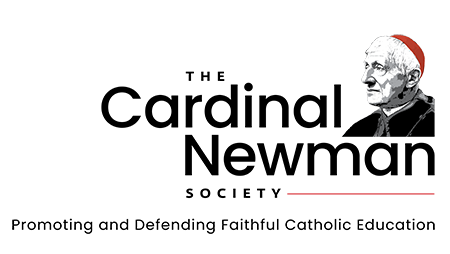
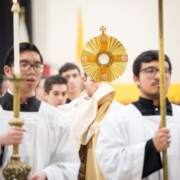
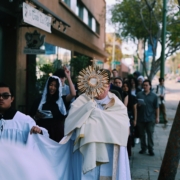
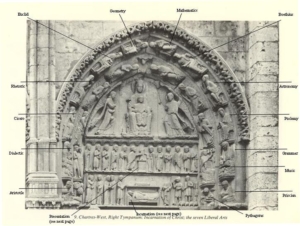



 I had been an atheist for my entire childhood leading up to my years at Holy Rosary Academy…
I had been an atheist for my entire childhood leading up to my years at Holy Rosary Academy…